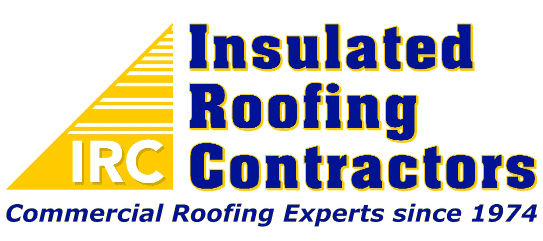Throughout this series, we have talked a lot about workplace safety and the various ways to keep your employees protected while on the job site. A safe work environment like the one we’ve built at IRC will reduce the amount of injuries and fatalities in a workplace, but an unsafe work environment can lead to very hazardous situations for all employees. This is because unsafe and poor working conditions can negatively affect a person’s physical and mental health.
At IRC, we’re committed to making safety our number one priority. We not only train our employees in every relevant safety requirement, but we are committed to maintaining the same degree of success and reputation in safety as we have in the quality of roofing services that we provide. Because of our industry-leading safety standards, we dedicated time to researching the most common mistakes that other businesses are prone to make and what steps must be taken to avoid them.
In this post, we are going to discuss those common mistakes, and what the effects of an unsafe work environment could cause if not handled properly or timely.
What is an Unsafe Work Environment?
An unsafe work environment occurs when an employee is unable to perform his or her required daily duties because the physical conditions of the workplace are too dangerous. For instance, exposed wiring, broken equipment, hazardous materials, or asbestos could pose an unsafe working environment for employees. Some common unsafe acts are running, horseplay, not following procedures, inadequate housekeeping, blocked walkways, improper or damaged PPE and inadequate machine guarding, by-passing safety devices, unauthorized equipment operations and using drugs and alcohol. Even the smallest unsafe actions could lead to serious injury or death.
Classification of Unsafe Working Environments
Unsafe working environments are a threat to everyone, and they can occur in any environment. They can often be classified as ergonomic hazards, chemical hazards, or biological hazards, although not all dangers in the workplace fall under those categories.
Ergonomic Hazards
Ergonomic hazards are related to the way your job strains your body. Sometimes it’s the type of work you do, such as work that requires you to use repetitive or awkward motions, or to lift things frequently; other times, it has to do with your body positions and your work environment, such as bad lighting or an improperly adjusted workstation.
Chemical Hazards
Chemical hazards are present any time you’re exposed to any chemical preparation in the workplace, whether it’s a solid, liquid, or gas. Chemicals can include cleaning products and solvents, vapors and fumes, and flammable materials. They can also include carbon monoxide, gasoline, and asbestos.
Biological Hazards
Biological hazards are those that come from working with people, plants, or animals. Blood and bodily fluids, bacteria and viruses, and even insect bites can be considered biological hazards. So can animal and bird droppings.
Understanding the Consequences of Unsafe Working Environments
Unsafe working conditions can have an enormous effect both financially and emotionally. The pain, suffering and possible death that come as a result of such accidents place a heavy burden on families and community. Injuries can also mean that the worker is unable to work, play sports, walk, or drive. The ramifications include financial, human and social costs. Furthermore, a report by The American Society of Safety Engineers says the aftermath of a fatal accident can go “far beyond” a financial cost to a company, it can also seriously threaten your workforce’s psychological health and could potentially dent their productivity in the long run.
Have You Been Subjected to Unsafe Working Environments?
If you discover unsafe working conditions, you may have the right to refuse to work until your employer fixes the issue or investigates and finds that there is no imminent danger. That’s only true if:
- You have a reasonable, good-faith belief that the condition poses an immediate and substantial risk of serious injury or death
- Your employer won’t fix the condition
- The danger is so immediate that you can’t report the condition to OSHA
- You don’t have a reasonable alternative
It is the responsibility of the employer to establish a safe working environment, free from any hazards and complying with state and federal laws. This involves preventing work-related disease and injury, and designing a workplace that promotes well-being.
How to Reduce Accidents in an Unsafe Working Environment
According to OSHA, workplaces that implement an appropriate health and safety management system can reduce their injury and illness costs by 40%. This implementation starts with the development of a plan to ensure your workplace is safe and adheres to OSHA rules and regulations guarding workplace safety. The Health and Safety Executive (HSE) recently published a new set of guidelines for implementing a health and safety program within your workplace.
Knowledge is an important component in providing a safe work environment. This is because knowing the correct procedures can keep accidents and injuries to a minimum.
If you’re currently working in an unsafe work environment, we invite you to apply to IRC. Keeping yourself and coworkers safe and going home at the end of every day unscathed is the most important part of any job. IRC understands that. Your safety matters!
